This time a few years ago our team met up with a customer to review an energy efficiency proposal planned for early the following year. Our HVAC and lighting upgrade was set to improve ventilation and lighting, while reducing the building’s annual energy consumption by 250,000 kWh. The local utility was prepared to contribute 30% of the project’s cost, producing a 28 month return on the potential investment.
Read More
Topics:
LED lighting,
Solar PV,
Behavior Change
We’ve seen it happen in the past when times get tough – politicians, desperate to keep funding for critical government programs, consider raiding existing set-asides for renewable energy.
Read More
Topics:
Solar PV,
Clean Energy grants,
Section 1603
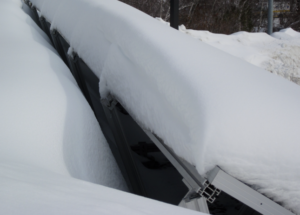
As Boston faces its fourth major snow storm in a month many New Englanders have sunk deep into the “dark months” blues. And each day as I stare at Groom Energy’s snow-covered solar array I can’t dismiss some level of guilt for our environmental faux pas.
Read More
Topics:
Solar PV,
snow covered solar,
Renewable Energy,
Harvard solar PV

With last night’s tax bill passage by the House, the renewable energy industry has been given a wonderful holiday gift. But this toy’s battery only lasts one year and you might not be able to replace it.
Read More
Topics:
Solar PV,
Federal Grants,
renewable grants,
Section 1603,
Renewable Energy
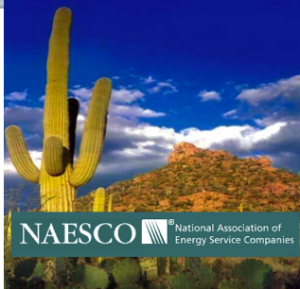
Today I’m attending the 27th annual NAESCO conference in Phoenix, AZ, a conference that serves as an annual checkpoint for the ESCO industry.
Read More
Topics:
Energy Efficiency,
Solar PV,
Energy Efficiency and Conservation Block Grant pro,
ESCO,
performance contracting,
Investment Tax Credit
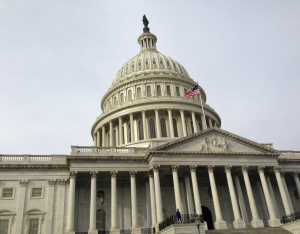 Labor Day typically marks the time when our year-end project installation schedule becomes more clear. Our corporate customers, often operating on a fiscal-calendar year for budgeting, also exhibit end-of-year psychology and “get it done by year end” becomes a priority. Normal product lead times, procurement contracts, permits, and even potential interruptions from winter weather means by Labor Day our construction year is pretty much set.
Labor Day typically marks the time when our year-end project installation schedule becomes more clear. Our corporate customers, often operating on a fiscal-calendar year for budgeting, also exhibit end-of-year psychology and “get it done by year end” becomes a priority. Normal product lead times, procurement contracts, permits, and even potential interruptions from winter weather means by Labor Day our construction year is pretty much set.
This year many cleantech project developers have even more tension leading up to their 2011 New Year’s party planning. With Section 1603, the US Federal program for renewable Grants in Lieu of an Investment Tax Credit (ITC), set to expire at the end of 2010, projects which are not at least 5% underway by year end will miss the proverbial party.
Read More
Topics:
Grant in Lieu of Investment Tax Credit,
Solar PV,
Power Purchase Agreement,
Clean Energy grants,
Section 1603,
Renewable Energy
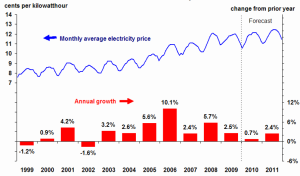 Recently a customer had us model the energy production and financial return for a new 2MW cogen system at their manufacturing site in the United Kingdom.
Recently a customer had us model the energy production and financial return for a new 2MW cogen system at their manufacturing site in the United Kingdom.
Our analysis considered their contract cost for kWh and natural gas, the system’s energy production in kWh and therms, its full installation and annual maintenance cost and their UK tax benefits, including a reduced carbon tax from the UK’s Carbon Reduction Commitment. All in, the capital investment had a simple payback of 2.3 years.
When we built the system’s 10 year PPA model there was one big question – what escalation rate for kWh and gas should we use?
Read More
Topics:
escalation rate,
cost of electricity,
PPA,
Solar PV,
escalator,
United Kingdom - carbon tax,
energy contracts,
Combined Heat & Power,
Power Purchase Agreement,
Energy Cost
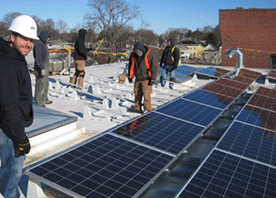 Today I’m attending and speaking at the SolarTech Conference in San Ramon, CA.
Today I’m attending and speaking at the SolarTech Conference in San Ramon, CA.
The conference format broke the day into working sessions covering all major areas relating to Solar PV: permitting, finance, installation, interconnection, and a new one for the market – energy efficiency (which I’ll come back to later). At the end of the day, the entire audience voted on the key initiatives for each of working session and these rankings become the basis for 2010 SolarTech working agenda. Makes great sense.
Read More
Topics:
Property Assessed Clean Energy,
PPA,
Solar PV,
energy audit,
Power Purchase Agreement,
PACE,
whole building assessment,
Clean Energy grants
During our 2010 business planning we’ve been speculating on trends that may affect our corporate customers (positively or negatively) in the coming 12 months. In 2009 Groom Energy delivered projects in 25 states and Puerto Rico. What’s stunning is how much time we spent confirming the incentives available in these states, through utilities, regional ISO’s and Clean Energy trusts. 2010 promises to introduce even great complexity to this already challenging game – in this regard here are four areas we think are worth watching:
Read More
Topics:
Energy Efficiency,
Solar PV,
carbon tax,
Copenhagen,
energy efficiency trends for 2010,
cap and trade,
2010 Cleantech trends,
Cap N Trade,
Investment Tax Credit
In my former life as a early stage venture capitalist I learned a traditional VC bias against investing in start ups where government subsidies were necessary to make the technology’s economic case work. Year’s later I’m scratching my head at how the VC market has thrown out this bias in cleantech investing, an example being their heavy investment in solar PV technology.
Read More
Topics:
utility rebates,
Rebates,
Solar PV,
Federal Grants,
federal grant,
incentives,
Clean Energy grants,
Investment Tax Credit




 Labor Day typically marks the time when our year-end project installation schedule becomes more clear. Our corporate customers, often operating on a fiscal-calendar year for budgeting, also exhibit end-of-year psychology and “get it done by year end” becomes a priority. Normal product lead times, procurement contracts, permits, and even potential interruptions from winter weather means by Labor Day our construction year is pretty much set.
Labor Day typically marks the time when our year-end project installation schedule becomes more clear. Our corporate customers, often operating on a fiscal-calendar year for budgeting, also exhibit end-of-year psychology and “get it done by year end” becomes a priority. Normal product lead times, procurement contracts, permits, and even potential interruptions from winter weather means by Labor Day our construction year is pretty much set. Recently a customer had us model the energy production and financial return for a new 2MW cogen system at their manufacturing site in the United Kingdom.
Recently a customer had us model the energy production and financial return for a new 2MW cogen system at their manufacturing site in the United Kingdom. Today I’m attending and speaking at the
Today I’m attending and speaking at the 